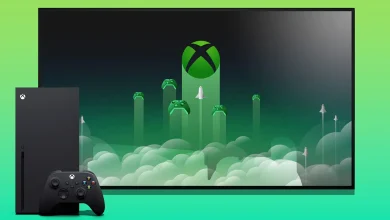Expanding the Boundaries of Gaming: A Journey into the Future of Interactive Entertainment
A Journey into the Future of Interactive Entertainment

Introduction:
Gaming, once confined to the realm of consoles and PCs, has transcended its traditional boundaries to become a multi-faceted, ubiquitous form of entertainment. Today, gaming is not just about playing; it’s about immersion, interaction, and innovation. From virtual reality (VR) to cloud gaming, from augmented reality (AR) to blockchain-based ecosystems, the boundaries of gaming are continually expanding, opening up new frontiers of creativity, accessibility, and engagement.
Virtual Reality (VR): Immersing Players in Alternate Realities:
Virtual reality (VR) represents one of the most significant advancements in gaming technology, offering players the opportunity to step into fully immersive virtual worlds. Equipped with VR headsets and motion controllers, players can explore fantastical landscapes, engage in heart-pounding adventures, and interact with virtual environments as if they were physically present. From breathtakingly realistic simulations to mind-bending abstract experiences, VR gaming transports players to new dimensions of immersion and interactivity, blurring the lines between reality and fantasy.
Virtual Reality (VR) in Gaming: Immersing Players in Alternate Realities:
Virtual reality (VR) gaming has emerged as a revolutionary technology that transcends the boundaries of traditional gaming, offering players an unparalleled level of immersion and interactivity. By transporting players to alternate realities, VR gaming provides an experience that goes beyond mere entertainment—it creates unforgettable adventures, immersive worlds, and thrilling experiences that blur the lines between fiction and reality. From high-octane action games to immersive storytelling experiences, VR gaming has redefined the way we play, engage, and connect in the world of gaming.
The Evolution of Virtual Reality Gaming:
Virtual reality gaming has come a long way since its inception, with significant advancements in hardware, software, and content creation driving its evolution. Early VR experiments in the 1980s and 1990s laid the groundwork for modern VR technology, but it wasn’t until the 2010s that VR gaming truly began to take off. The introduction of consumer-grade VR headsets such as the Oculus Rift, HTC Vive, and PlayStation VR brought VR gaming into the mainstream, offering players a glimpse into the future of gaming.
Immersive Worlds and Realistic Environments:
One of the most compelling aspects of VR gaming is its ability to create immersive worlds and realistic environments that transport players to alternate realities. Whether it’s exploring the vast landscapes of a fantasy realm, navigating the corridors of a haunted mansion, or piloting a spacecraft through the depths of space, VR gaming allows players to step into the shoes of their virtual avatar and experience adventures like never before. With stunning graphics, lifelike animations, and spatial audio technology, VR gaming creates a sense of presence and immersion that is unmatched by traditional gaming experiences.
Interactive Gameplay and Physical Interaction:
VR gaming goes beyond traditional controllers and keyboards, allowing players to interact with the virtual world using their hands, body movements, and voice commands. With motion controllers and room-scale tracking, players can reach out and grab objects, manipulate the environment, and engage in dynamic combat with enemies. This level of physical interaction adds a new layer of immersion to VR gaming, making players feel like active participants in the virtual world rather than passive observers.
Social Interaction and Multiplayer Experiences:
While VR gaming can be a solitary experience, it also offers opportunities for social interaction and multiplayer experiences. Whether it’s teaming up with friends to tackle cooperative missions, competing against rivals in multiplayer battles, or exploring virtual worlds together, VR gaming provides a platform for players to connect, collaborate, and compete in new and exciting ways. From virtual hangouts and social events to competitive esports tournaments, VR gaming communities offer a vibrant and dynamic ecosystem where players can come together and share their passion for gaming.
Challenges and Future Directions:
While VR gaming has made significant strides in recent years, it still faces challenges that must be addressed for widespread adoption. These include concerns about motion sickness, the high cost of entry, and the need for more compelling content. However, as technology continues to improve and become more accessible, the future of VR gaming looks promising. With advancements in hardware, software, and content creation tools, VR gaming has the potential to revolutionize the gaming industry and redefine the way we play, engage, and connect in the world of gaming.
Conclusion:
Virtual reality gaming represents a transformative leap forward in interactive entertainment, offering players the opportunity to step into alternate realities and experience adventures beyond their wildest dreams. With its ability to create immersive worlds, enable interactive gameplay, and foster social interaction, VR gaming has redefined the way we play, engage, and connect in the world of gaming. As technology continues to evolve and improve, the possibilities for VR gaming are limitless, promising a future filled with unforgettable adventures, immersive experiences, and thrilling escapades in alternate realities.
Augmented Reality (AR): Overlaying Digital Magic onto the Real World:
Augmented reality (AR) takes gaming beyond the confines of the screen, blending digital elements with the player’s physical environment. Through the lens of a smartphone, tablet, or AR headset, players can superimpose virtual objects onto real-world settings, transforming everyday spaces into interactive playgrounds. Whether it’s catching virtual creatures in Pokémon GO, battling enemies in your living room, or solving puzzles in your backyard, AR gaming brings the magic of digital entertainment into the real world, creating captivating experiences that bridge the gap between fiction and reality.
Augmented Reality (AR) in Gaming: Overlaying Digital Magic onto the Real World:
Augmented reality (AR) gaming represents a groundbreaking fusion of virtual and physical worlds, offering players a unique and immersive gaming experience that blurs the lines between fantasy and reality. By overlaying digital elements onto the real world through the lens of a smartphone or AR headset, AR gaming transforms ordinary environments into dynamic and interactive playgrounds, inviting players to embark on adventures, solve puzzles, and engage in thrilling battles in the world around them.
The Rise of Augmented Reality Gaming:
Augmented reality gaming has gained significant momentum in recent years, propelled by advancements in mobile technology, GPS tracking, and computer vision. One of the most notable early successes in the AR gaming space was Niantic’s Pokémon GO, which captivated millions of players worldwide upon its release in 2016. Pokémon GO introduced players to the concept of AR gaming by allowing them to explore real-world locations in search of virtual Pokémon creatures, sparking a global phenomenon that showcased the immense potential of AR technology in gaming.
Immersive Experiences in the Real World:
One of the defining features of AR gaming is its ability to immerse players in the real world while layering virtual elements onto their surroundings. Whether it’s battling virtual monsters in a park, solving puzzles in a museum, or embarking on location-based quests in a city, AR gaming encourages players to interact with their environment in new and exciting ways. By leveraging GPS data, real-world landmarks, and environmental cues, AR games create immersive experiences that unfold seamlessly in the player’s physical surroundings, blurring the boundaries between the digital and the real.
Interactive Gameplay and Physical Interaction:
AR gaming goes beyond traditional touchscreen controls, allowing players to interact with virtual elements using gestures, motion tracking, and real-world objects. With AR technology, players can physically move around their environment, scan objects with their device’s camera, and manipulate virtual objects with their hands. This level of physical interaction adds a new layer of immersion to AR gaming, making players feel like active participants in the virtual world as they engage in dynamic battles, solve puzzles, and explore hidden treasures in their surroundings.
Social Interaction and Community Engagement:
AR gaming also fosters social interaction and community engagement, bringing players together in shared experiences and collaborative gameplay. Whether it’s teaming up with friends to conquer virtual challenges, competing against rival teams in location-based competitions, or participating in large-scale events and gatherings, AR gaming creates opportunities for players to connect, collaborate, and celebrate their shared passion for gaming. From local meetups and community events to global tournaments and online forums, AR gaming communities provide a vibrant and inclusive space where players can come together and share their adventures.
Challenges and Future Directions:
While AR gaming has seen significant growth and innovation, it still faces challenges that must be addressed for continued success. These include technical limitations such as battery life, device compatibility, and the accuracy of GPS and sensor data, as well as concerns about privacy, safety, and security in AR-enabled environments. However, as technology continues to evolve and improve, the future of AR gaming looks promising. With advancements in hardware, software, and networking technologies, AR gaming has the potential to revolutionize the gaming industry and redefine the way we play, engage, and interact with the world around us.
Conclusion:
Augmented reality gaming represents a new frontier in interactive entertainment, offering players the opportunity to overlay digital magic onto the real world and embark on adventures that unfold seamlessly in their physical surroundings. With its ability to create immersive experiences, enable interactive gameplay, and foster social interaction, AR gaming has redefined the way we play, engage, and connect in the world of gaming. As technology continues to advance and evolve, the possibilities for AR gaming are limitless, promising a future filled with thrilling adventures, immersive experiences, and magical moments in the real world.
Cloud Gaming: Breaking Down Barriers to Access:
Cloud gaming is revolutionizing the way we play by eliminating the need for high-end hardware and physical game installations. With cloud gaming platforms, players can stream games directly to their devices over the internet, accessing a vast library of titles without the constraints of storage space or processing power. By leveraging powerful server infrastructure, cloud gaming makes gaming more accessible and convenient than ever before, allowing players to dive into their favorite games anytime, anywhere, on any device.
Cloud Gaming: Breaking Down Barriers to Access in Gaming:
Cloud gaming has emerged as a revolutionary technology that is reshaping the gaming landscape by offering players a new way to access and enjoy their favorite games. By streaming games directly from remote servers over the internet, cloud gaming eliminates the need for high-end hardware and physical game installations, breaking down barriers to access and making gaming more accessible and convenient than ever before. This transformative technology has the potential to democratize gaming, opening up new opportunities for players of all backgrounds to dive into immersive gaming experiences without the constraints of expensive hardware or limited storage space.
The Evolution of Cloud Gaming:
The concept of cloud gaming has been around for decades, with early experiments dating back to the early 2000s. However, it wasn’t until recent years that cloud gaming began to gain widespread attention and adoption, thanks to advancements in internet infrastructure, streaming technology, and cloud computing. Today, cloud gaming platforms such as Google Stadia, Microsoft xCloud, and NVIDIA GeForce Now offer players the ability to stream high-quality games directly to their devices, regardless of their hardware specifications or location.
Accessibility and Convenience:
One of the most significant benefits of cloud gaming is its accessibility and convenience. With cloud gaming, players no longer need to invest in expensive gaming hardware or worry about downloading and installing large game files. Instead, they can simply stream games directly to their devices over the internet, accessing a vast library of titles with just a few clicks. This level of accessibility makes gaming more inclusive and welcoming to players of all backgrounds, including those who may not have the means to invest in high-end gaming hardware.
Flexibility and Freedom:
Cloud gaming offers players unprecedented flexibility and freedom to play games whenever and wherever they want. Whether it’s on a smartphone, tablet, laptop, or smart TV, cloud gaming platforms allow players to access their favorite games from any device with an internet connection, enabling gaming experiences on the go. This flexibility is particularly appealing to busy gamers who may not have the time or resources to sit down in front of a dedicated gaming console or PC but still want to enjoy immersive gaming experiences on their own terms.
Cost-Effectiveness and Affordability:
Cloud gaming can also be a cost-effective alternative to traditional gaming setups, as it eliminates the need for expensive hardware upgrades and physical game purchases. Instead of buying individual game titles, players can subscribe to cloud gaming services for a monthly fee, gaining access to a library of games that they can stream on demand. This subscription-based model offers players a cost-effective way to enjoy a wide variety of games without breaking the bank, making gaming more accessible and affordable to players of all budgets.
Challenges and Future Directions:
Despite its many benefits, cloud gaming still faces challenges that must be addressed for widespread adoption. These include concerns about internet connectivity, latency, and input lag, as well as issues related to game licensing and availability. However, as technology continues to improve and infrastructure investments are made, the future of cloud gaming looks promising. With advancements in 5G technology, edge computing, and content delivery networks, cloud gaming has the potential to revolutionize the gaming industry and redefine the way we play, engage, and interact with games.
Conclusion:
Cloud gaming represents a transformative shift in the gaming industry, offering players a new way to access and enjoy their favorite games without the constraints of expensive hardware or limited storage space. By breaking down barriers to access and making gaming more accessible and convenient than ever before, cloud gaming has the potential to democratize gaming and open up new opportunities for players of all backgrounds to dive into immersive gaming experiences. As technology continues to evolve and improve, the future of cloud gaming looks bright, promising a world where anyone can enjoy the thrill of gaming anytime, anywhere, on any device.
Blockchain and NFTs: Empowering Players with Ownership and Value:
Blockchain technology and non-fungible tokens (NFTs) are reshaping the gaming industry by introducing new models of ownership, value, and monetization. Through blockchain-based ecosystems, players can own and trade digital assets such as in-game items, skins, and even entire virtual worlds, with the assurance of authenticity and scarcity provided by blockchain technology. NFTs enable players to truly own their digital possessions, unlocking new opportunities for creativity, customization, and economic empowerment within the gaming ecosystem.
Blockchain and NFTs: Empowering Players with Ownership and Value in Gaming:
Blockchain technology and non-fungible tokens (NFTs) have emerged as revolutionary technologies with the potential to transform the gaming industry. By leveraging decentralized ledgers and cryptographic tokens, blockchain and NFTs empower players with true ownership of in-game assets, while also unlocking new opportunities for value creation, monetization, and community engagement. This transformative shift in gaming economics has the potential to redefine the relationship between players, developers, and the virtual worlds they inhabit, ushering in a new era of player empowerment and creativity.
The Evolution of Blockchain and NFTs in Gaming:
Blockchain technology, the underlying technology behind cryptocurrencies like Bitcoin and Ethereum, has gained significant attention in recent years for its potential applications beyond finance. One of the most promising areas for blockchain technology is gaming, where it has the potential to revolutionize the way in-game assets are created, traded, and owned. Non-fungible tokens (NFTs), a type of digital asset that represents ownership of a unique item or piece of content, have emerged as a key innovation in this space, enabling players to buy, sell, and trade digital assets with verifiable ownership and scarcity.
True Ownership of In-Game Assets:
One of the most significant benefits of blockchain and NFTs in gaming is the concept of true ownership of in-game assets. Traditionally, in-game items and virtual currencies are owned and controlled by game developers, with players having limited rights to use or transfer them. However, with blockchain and NFTs, players can truly own their in-game assets, with ownership recorded on a decentralized ledger and controlled by cryptographic keys. This gives players the ability to buy, sell, and trade their assets freely, both within and outside of the game environment, without fear of censorship or confiscation.
Value Creation and Monetization:
Blockchain and NFTs also unlock new opportunities for value creation and monetization in gaming. By tokenizing in-game assets as NFTs, developers can create scarcity and exclusivity, driving demand for rare and unique items. Players can then buy, sell, and trade these items on decentralized marketplaces, creating a new economy around digital assets within the game. This not only provides players with the opportunity to monetize their time and effort spent in the game but also incentivizes creativity and innovation, as players seek to create valuable and sought-after assets.
Community Engagement and Participation:
Blockchain and NFTs also foster community engagement and participation within gaming ecosystems. By allowing players to own and trade in-game assets, developers can incentivize community participation and reward players for their contributions to the game. This could include everything from creating custom content and mods to organizing events and tournaments or even contributing to the development of the game itself. By giving players a stake in the game economy, blockchain and NFTs create a sense of ownership and investment in the success of the game, fostering a vibrant and engaged community of players.
Challenges and Future Directions:
Despite the many benefits of blockchain and NFTs in gaming, there are still challenges that must be addressed for widespread adoption. These include concerns about scalability, interoperability, and regulatory compliance, as well as issues related to user experience and education. However, as technology continues to evolve and mature, the future of blockchain and NFTs in gaming looks promising. With advancements in blockchain scalability solutions, interoperability protocols, and user-friendly interfaces, blockchain and NFTs have the potential to revolutionize the gaming industry and empower players with true ownership and value.
Conclusion:
Blockchain technology and non-fungible tokens (NFTs) are poised to revolutionize the gaming industry, empowering players with true ownership of in-game assets and unlocking new opportunities for value creation, monetization, and community engagement. By leveraging decentralized ledgers and cryptographic tokens, blockchain and NFTs enable players to buy, sell, and trade digital assets with verifiable ownership and scarcity, creating a new economy around virtual goods within the game. As technology continues to evolve and mature, the potential for blockchain and NFTs to reshape the gaming industry and empower players with ownership and value is limitless, promising a future where players have greater control over their gaming experiences and the virtual worlds they inhabit.
Artificial Intelligence (AI) and Procedural Generation: Endless Possibilities for Creativity:
Artificial intelligence (AI) and procedural generation algorithms are pushing the boundaries of creativity in gaming, enabling developers to create vast, dynamic worlds and compelling gameplay experiences with unprecedented scale and complexity. From AI-powered NPCs that exhibit lifelike behavior and adapt to player actions to procedurally generated levels, quests, and narratives that offer endless possibilities for exploration and discovery, AI and procedural generation technologies are driving innovation in game design and storytelling, shaping the future of gaming in exciting and unexpected ways.
Social Interaction and Community Engagement: Building Virtual Worlds Together:
At the heart of gaming lies the power of social interaction and community engagement. Whether it’s teaming up with friends to conquer epic challenges, joining forces with fellow enthusiasts in online guilds and clans, or sharing experiences and strategies with players from around the world, gaming communities provide a sense of belonging and camaraderie that transcends geographic boundaries and cultural differences. Through shared experiences, collaborative gameplay, and player-driven content creation, gaming communities are building vibrant virtual worlds where players can connect, create, and thrive together.
Conclusion:
The boundaries of gaming are expanding at an unprecedented pace, driven by technological advancements, creative innovation, and the evolving needs and desires of players. From immersive VR experiences to accessible cloud gaming platforms, from blockchain-powered economies to AI-driven worlds, the future of gaming is limitless, offering endless possibilities for exploration, creativity, and connection. As we embark on this journey into the unknown, one thing is certain: the only limit to the potential of gaming is our imagination.











